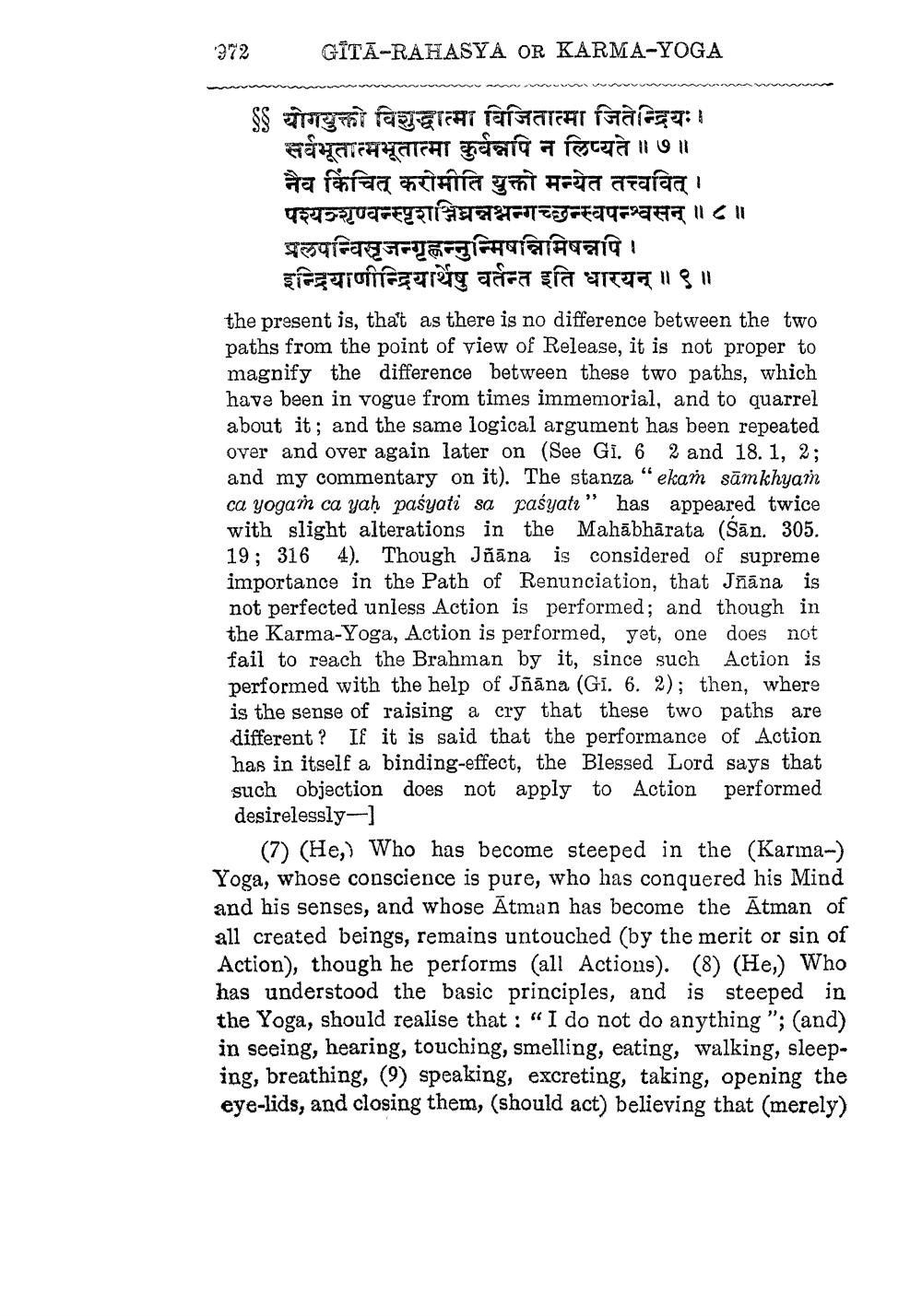________________
372
GÍTA-RAHASYA OR KARMA-YOGA
$$ योगयुक्तो विशुद्धात्मा विजितात्मा जितेन्द्रियः।
सर्वभूतात्मभूतात्मा कुर्वन्नपि न लिप्यते ॥७॥ नैव किंचित् करोमीति युक्तो मन्येत तत्त्ववित् । पश्यञ्शृण्वन्स्पृशनिघनश्नन्गच्छन्स्वपन्श्वसन् ॥ ८॥ प्रलपन्विसृजन्गृह्णन्नुन्मिषन्निमिषन्नपि ।
इन्द्रियाणीन्द्रियार्थेषु वर्तन्त इति धारयन् ॥९॥ the present is, that as there is no difference between the two paths from the point of view of Release, it is not proper to magnify the difference between these two paths, which have been in vogue from times immemorial, and to quarrel about it; and the same logical argument has been repeated over and over again later on (See Gi. 6 2 and 18.1, 2; and my commentary on it). The stanza" ekaṁ samkhyam ca yogam ca yaḥ paśyati sa paśyatı” has appeared twice with slight alterations in the Mahābhārata (Sān. 305. 19; 316 4). Though Jñāna is considered of supreme importance in the Path of Renunciation, that Jnana is not perfected unless Action is performed; and though in the Karma-Yoga, Action is performed, yet, one does not fail to reach the Brahman by it, since such Action is performed with the help of Jñāna (Gi. 6. 2); then, where is the sense of raising a cry that these two paths are different? If it is said that the performance of Action has in itself a binding-effect, the Blessed Lord says that such objection does not apply to Action performed desirelessly
(7) (He,) Who has become steeped in the (Karma-) Yoga, whose conscience is pure, who has conquered his Mind and his senses, and whose Ātman has become the Ātman of all created beings, remains untouched (by the merit or sin of Action), though he performs (all Actions). (8) (He) Who has understood the basic principles, and is steeped in the Yoga, should realise that : "I do not do anything ”; (and) in seeing, hearing, touching, smelling, eating, walking, sleeping, breathing, (9) speaking, excreting, taking, opening the eye-lids, and closing them, (should act) believing that (merely)




